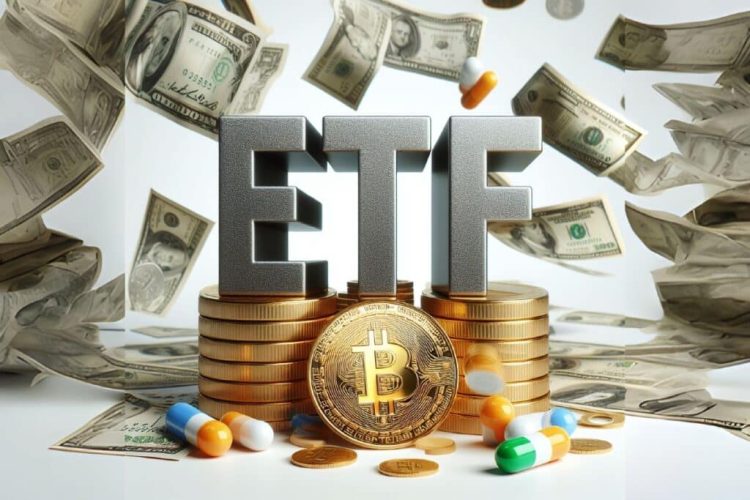For years, the cryptocurrency market has operated in a gray area, characterized by explosive growth, devastating crashes, and an underlying current of uncertainty that has kept trillions of dollars of institutional capital on the sidelines. While pioneers and retail investors were willing to navigate this ambiguity, the vast majority of traditional finance has remained hesitant, citing regulatory uncertainty as the single greatest barrier to entry. However, a global shift is underway. As governments from Washington to Brussels to Tokyo begin to provide concrete regulatory frameworks, a new narrative is emerging: regulation is not the enemy of innovation, but its necessary precursor. Rather than stifling the crypto revolution, clear and thoughtful regulation may prove to be the most powerful catalyst yet for the widespread adoption of leading cryptocurrencies like Bitcoin and Ethereum. The question is no longer if regulation is coming, but how the clarity it provides will finally unlock the floodgates of institutional and mainstream investment.
This transition from the wild west to a rules-based environment addresses the fundamental concerns of large-scale investors: legitimacy, security, and predictability. For an asset class to hold the world’s wealth, it must operate within the world’s legal and financial structures. Regulatory clarity provides the guardrails that transform crypto from a speculative gamble into a viable asset class for pensions, endowments, and corporations. This article will explore the psychological and practical reasons why clear rules attract major investors, examine real-world case studies where regulatory milestones have directly driven adoption, and offer predictions on how future regulations will continue to shape the landscape for leading cryptocurrencies.
The Psychology of Certainty: Why Clear Rules Attract Capital
The aversion to uncertainty is a foundational principle of traditional finance. For institutional investors managing billions of dollars, ambiguity is synonymous with risk, and unquantifiable risk is unacceptable. Regulatory clarity systematically dismantles these barriers.
1. Legitimization and Reduced Perceived Risk: A regulated market is a legitimate market. When a government agency like the SEC or a European regulator provides a clear framework, it signals that the asset class is here to stay and is recognized by the established financial order. This official sanctioning reduces the perceived “fraud” and “scam” risk that has long plagued the crypto industry. Investors can allocate capital without fearing that the entire sector will be outlawed or deemed illegitimate, a concern that was very real just a few years ago.
2. Operational and Compliance Confidence: Large financial institutions have massive compliance and legal departments. Their primary mandate is to ensure the firm does not violate any laws. In an unregulated environment, these departments would simply veto any proposed crypto investment. Clear rules change this. They provide a documented playbook for how to custody assets, how to report transactions for tax purposes, how to perform KYC/AML checks, and what constitutes a compliant security offering. This allows internal compliance teams to green-light initiatives, knowing there is a clear path to operating within the law.
3. Pathway for Institutional-Grade Infrastructure: Regulation fosters the development of the necessary infrastructure for large-scale entry. This includes:
- Regulated Custodians: Banks and specialized firms like Fidelity Digital Assets can now offer insured, audited custody solutions that meet the stringent standards required for institutional assets. This solves the major “key management” problem that kept large funds away.
- ETF and Other Financial Products: Regulatory approval for vehicles like Bitcoin or Ethereum ETFs allows investors to gain exposure through familiar, regulated stock exchanges without the technical complexity of direct ownership. This opens the market to a entire universe of investors who would never open a crypto exchange account.
- Clear Accounting and Audit Standards: Guidelines on how to value and report crypto holdings on balance sheets (e.g., from the FASB) give corporate treasuries and investment funds the confidence to add digital assets to their portfolios.
In essence, regulatory clarity builds a bridge between the traditional financial world and the new digital asset ecosystem, allowing capital to flow across it with confidence.
Case Studies: When Clarity Directly Drove Adoption
Theory is compelling, but real-world examples prove the point. Several key regulatory events have directly catalyzed significant adoption waves.
1. The Bitcoin Futures Launch (2017): While not legislation, the approval of Bitcoin futures contracts by the CFTC in December 2017 was a watershed regulatory moment. It was the first time a U.S. federal regulatory agency had given a green light to a crypto-derived financial product offered by established institutions (CBOE and CME). This provided a regulated, familiar vehicle for institutional investors to gain exposure and hedge risk. It marked the beginning of serious institutional interest and laid the groundwork for everything that followed.
2. Switzerland’s “Crypto Valley” in Zug: Switzerland’s proactive approach to providing clear legal guidelines early on transformed the canton of Zug into a global hub for crypto and blockchain businesses. The Swiss Financial Market Supervisory Authority (FINMA) provided clear guidance on ICOs and token classifications, creating a predictable environment. This clarity attracted foundational projects like Ethereum, Cardano, and Solana to establish foundations there, driving massive development, investment, and adoption from the very heart of the project level.
3. The Bitcoin ETF Approvals (2024): This is the most powerful and recent case study. The long-awaited approval of spot Bitcoin ETFs by the SEC in January 2024 was the ultimate act of regulatory clarity for the world’s largest cryptocurrency. The impact was immediate and staggering. Within months, these ETFs absorbed over $50 billion in assets, representing the single largest influx of institutional capital into crypto history. It provided a seamless, familiar, and regulated on-ramp for every financial advisor, retirement account, and hedge fund in America. The approval didn’t just attract investors; it fundamentally altered the market structure, creating massive new demand from entities that were previously unable or unwilling to participate.
4. The EU’s MiCA Regulation: The comprehensive Markets in Crypto-Assets (MiCA) regulation provides a single rulebook for 27 nations. While fully coming into force in 2024, its passage alone provided certainty. Crypto businesses now know exactly what is required to operate across the entire EU single market. This has already triggered a wave of expansion into Europe by exchanges and service providers seeking a stable regulatory home, making the eurozone a more integrated and significant market for crypto adoption.

Predicting the Next Wave: How Future Regulations Will Shape Adoption
The current regulatory clarity is just the beginning. Future developments will continue to be the primary driver of adoption.
1. Clarity on Staking and Yield: A major unanswered question in the U.S. is the regulatory status of staking rewards and DeFi yield. The SEC’s stance remains ambiguous. A clear, favorable ruling that does not classify staking-as-a-service as a security would unleash a wave of institutional participation in proof-of-stake networks like Ethereum, Cardano, and Solana. It would allow wealth managers to offer “yield-bearing digital asset” strategies, a hugely attractive product for investors in a search for yield.
2. The Stablecoin Standard: The passing of a federal stablecoin regulation in the U.S. (e.g., the Clarity for Payment Stablecoins Act) would be monumental. It would legitimize the primary on-ramp and medium of exchange for the entire crypto economy. Regulated, bank-issued stablecoins would become the backbone of a new payments infrastructure, encouraging corporations to use them for treasury management and cross-border transactions, thus driving immense adoption.
3. The “Token Classification” Framework: The biggest cloud over the market is the question of what constitutes a security. A legislative solution that provides a clear, definitive test for token classification would eliminate the “regulatory overhang” that discounts the value of thousands of projects. This would allow developers to build with confidence and investors to allocate capital without fear of sudden SEC enforcement actions.
4. Global Tax Harmonization: As the OECD’s Crypto-Asset Reporting Framework (CARF) is adopted globally, it will create a standard for tax treatment. While increasing compliance, this clarity will remove a major headache for institutional investors and high-net-worth individuals, making it easier to hold digital assets across multiple jurisdictions and further integrating crypto into global portfolio management.
Conclusion: From Obstacle to Enabler
The narrative that regulation is antithetical to crypto’s decentralized ethos is fading. The evidence is clear: regulatory clarity is not a constraint but a catalyst. It is the key that unlocks the door to the vast reservoirs of institutional capital that have been waiting on the sidelines. By providing legitimacy, building essential infrastructure, and defining the rules of the game, thoughtful regulation does not kill the market; it legitimizes and expands it.
The case studies of Bitcoin futures, ETFs, and proactive jurisdictions like Switzerland prove that when the rules become clear, money flows in predictably and massively. The leading cryptocurrencies—Bitcoin as a sanctioned store of value and Ethereum as a regulatory-compliant computing platform—stand to benefit the most from this trend. The future of crypto adoption will be written not just by developers, but by policymakers. The projects and investors that embrace this new reality of clarity will be the ones to thrive in the next chapter of the digital economy.































